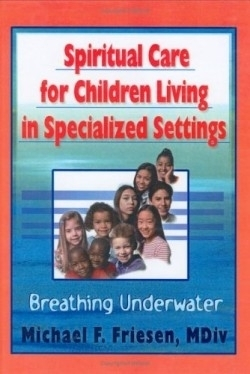Spiritual Care for Children Living in Specialized Settings
Breathing Underwater
Sal was a fifteen-year-old Hispanic boy who ended up in an institution for
children after a drug deal/robbery went bad. Mike was abandoned by his mother
as a young child and left a ward of the state. Kelly had experienced rape,
abuse and suicide attempts by the time she was a teenager.
These may not be their real names, but any social worker, minister or other
professional who works at a children’s institution or social service agency
will recognize the circumstances are real and repeated every day. Friesen, an
ordained minister, has worked with such children at St. Joseph’s Home for
Children in Minneapolis, Minnesota, for more than twenty years and offers a
practical guide on how to offer spiritual nourishment within this context. He
compares their lives to being swept under the water and contends that spiritual
care is like teaching them to breathe in an environment that is unlikely to
change.
Arguing that this aspect of care need not, and should not, be left entirely to
a staff pastor, he shows how any professional can incorporate such care into a
program.
Beginning with a review of the four biggest, most common, organized
religions-Judaism, Christianity, Islam and Buddhism-he outlines common themes
on suffering. He moves into a discussion of spirituality’s place in American
culture, and especially in the culture of abuse shared by most of these
children.
Personal stories on children like Sal, Mike and Kelly provide a springboard for
targeting the spiritual issues and struggles they face. Friesen offers
practical suggestions and reflection exercises that workers can put into
practice. He also addresses the ten most common questions asked by
professionals concerned about adding a spiritual component. Does spiritual care
go against the separation of Church and State and what are the boundaries? - is
question number one. Once answered, he guides readers through designing a
spiritual-care program, the important issues at each step of childhood and
finally, offers three assessment models.
Reviewed by
Patricia Voice
Disclosure: This article is not an endorsement, but a review. The publisher of this book provided free copies of the book to have their book reviewed by a professional reviewer. No fee was paid by the publisher for this review. Foreword Reviews only recommends books that we love. Foreword Magazine, Inc. is disclosing this in accordance with the Federal Trade Commission’s 16 CFR, Part 255.

